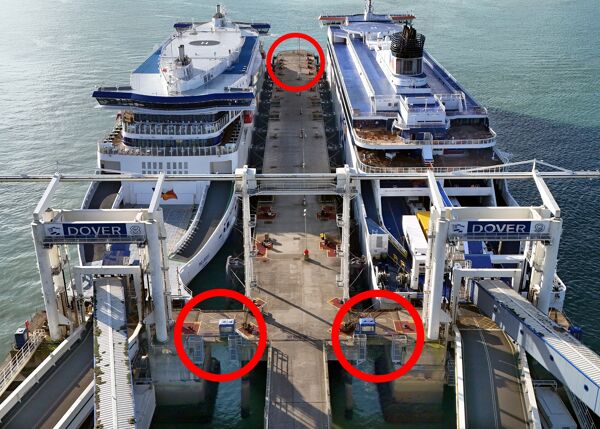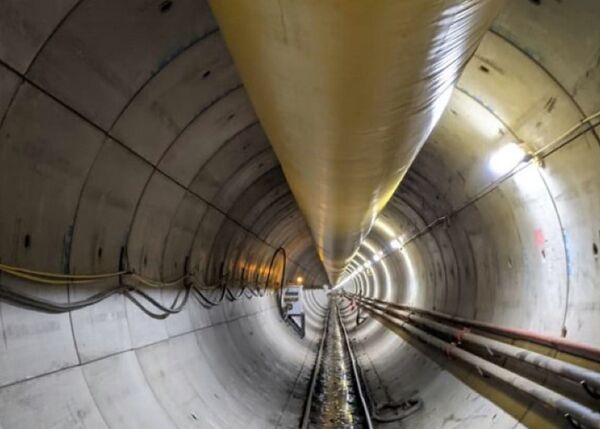
NEC Users’ Group silver member the Environment Agency has used NEC contracts to procure a complex five-year flood defence project in Great Yarmouth on the east coast of England.
The Norfolk seaside town has a history of flooding caused by North Sea tidal surges overtopping the banks of the Rivers Yare and Bure, most recently in December 2013. The project, known as Great Yarmouth Flood Defences Epoch 2, involved local improvements to 4 km of the town’s 10 km of steel-sheet-piled and concrete flood defences. These reduce the risk of tidal flooding to around 4,500 homes, business and critical infrastructure but have become badly corroded in places.
Following a phase of early contractor involvement, the Environment Agency awarded the £30 million design-and-construction contract in February 2019 to its water and environment management framework contractor JBA Bentley under an NEC3 Engineering and Construction Contract (ECC) Option C (target contract with activity schedule). NEC project manager Turner & Townsend and NEC supervisor Jacobs were both appointed under an NEC3 Professional Services Contract (PSC).
The work involved enhancing, refurbishing or replacing quay walls at 40 locations to ensure they would provide 1-in-200-year (0.5% annual exceedance probability) flood protection over a 30−50 years design life. Solutions included raising existing wall heights, installing cathodic protection, plating existing sheet piles, repairing concrete capping beams and constructing new set-back (retired line) flood walls. The contractor undertook both quayside and maritime activities using a wide variety of equipment, including multiple crawler cranes, one mounted on a jack-up barge, and innovative limpet dam technology for underwater inspections and repairs.
Despite Covid-19 restrictions during the middle part of the project, it remained on time and within budget for completion in April 2023. The project won the Environment and Sustainability Initiative prize in the 2021 British Construction Industry Awards (BCIA), where a 65% reduction against the carbon baseline demonstrated a saving of over 5,500 tCO2e. The project team was also shortlisted for the Temporary Works Initiative award in the 2022 BCIA and was voted runner-up in the 2022 NEC Martin Barnes Contractor of the Year Award.
Appropriate risk allocation
NEC project manager Guy Walker says, ‘The Environment Agency has used NEC contracts for over a decade. As such the client has a strong understanding of how to use the various NEC options to provide the most appropriate allocation of risk. In this case ECC Option C was selected for the main works contract as it enabled the parties to share risks and commercial success, encouraged both to drive efficiencies during design and construction, and gave the client financial transparency.’
He continues, ‘PSC option E (cost reimbursable contract) was used for the consultancy appointments. This allowed each party to assess the time requirement on a rolling basis as the project dictated. While this put most risk on the client, the defined cost forecasting requirement gave the client sufficient visibility and control to challenge forecast time when necessary.’
Collaborative approach
Walker says the NEC requirement for parties to act in a, ‘spirit of mutual trust and co-operation,’ helped to ensure a highly collaborative approach from the outset. ‘From the early contractor involvement phase through the highly uncertain times of the Covid-19 lockdowns and on to completion, the project team followed the core NEC principles of “mutual trust and co-operation”.’
He says his mantra as project manager was, ‘contract management, not contract administration’. ‘To this end we set up structured monthly meetings above and beyond NEC’s administrative requirements. The project team met for the required NEC early warning notification reviews and defined cost forecasts, but we also held design, compensation event and monthly progress meetings, where the accepted programme review was a key agenda item.’
Walker says a key learning from a previous project was to make the design development and review process work for everyone. ‘The design was split into 21 geographical work packages, allowing the contractor’s design team to focus on discrete deliverables. The works information was written to afford 21 or 28 days for design acceptance, thus stepping away from the two weeks period for reply, but providing sensible time for a thorough review. The works information also introduced the concept of “accepted with comments”, which allowed the contractor to continue within certain parameters.’
He says the contractor led all design workshops and ad-hoc sessions and was a frequent and active problem solver in advance. ‘Despite much of the works requiring similar solutions, a “one size does not fit all” approach was adopted. This allowed the achievement of several clause 63.11 implementations which incentivised the contractor to seek cost reductions – and increase commercial gain share − through value engineering and efficiencies, local supply-chain use benefits, environmental enhancements and recycling.’
Positive behaviour
Walker says the project team displayed positive behaviour across all NEC contract processes. ‘For NEC early warning meetings, the contractor always prepared mitigations in advance to prompt discussions and ideas. Relevant parties actively contributed to compensation event meetings when discussing the concepts and quotation requirements of each event. The project team also made frequent, positive contributions to developing and agreeing my project manager assumptions, which allowed the team to make sensible decisions on less certain change events and risk.’
He adds that the contractor allowed the client’s cost manager access to its procurement and time sheets systems to assess the amount due independently. ‘The end result of this NEC-inspired collaboration and positive behaviour was that this complex and challenging project remained on time and within budget for a completion date of April 2023, a testament to the full project team’.
Benefits of using NEC
- NEC requirement on the parties to act in a, ‘sprit of mutual trust and co-operation,’ helped to ensure a fully collaborative approach within the project team.
- NEC flexibility enabled the client to choose a risk-sharing ECC target contract for the main design-and-build works and cost-reimbursable PSC contracts for its consultancy team.
- NEC contract mechanisms of early warnings, defined cost forecasts and programme reviews helped to ensure the complex and challenging works programme was completed on time and budget.



